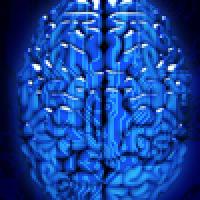
Plus Advent Calendar Door #12: No pain on the brain
You might not have thought it, but while you sit contentedly digesting your turkey and gazing at the telly, your brain is keeping up the hard work, making sure that everything in your body goes according to plan. And to understand this most amazing of nature's creations you need maths. Here are some of our favourite articles on brains, human and animal.
Saying that someone is a chaotic thinker might seem like an insult, but, as this article shows, it could be that the mathematical phenomenon of chaos is a crucial part of what makes our brains work.
Catching sight of a cockroach tends to make us behave chaotically, what with the running and screaming and throwing of shoes. But it appears that chaos might actually explain how we, and the cockroach itself, behave.
The human brain faces a difficult trade-off. On the one hand it needs to be complex to ensure high performance. On the other hand it needs to minimise what you might call wiring cost — the sum of the length of all the connections — because communication over distance is metabolically expensive. It's a problem well-known to computer scientists. And it seems that market-driven human invention and natural selection, faced with similar challenges, have come up with similar solutions.
Uncoiling the spiral: Maths and hallucinations
Think drug-induced hallucinations, and the whirly, spirally, tunnel-vision-like patterns of psychedelic imagery immediately spring to mind. But it's not just hallucinogenic drugs that conjure up these geometric structures. People have reported seeing them in near-death experiences, following sensory deprivation, or even just after applying pressure to the eyeballs. So what can these patterns tell us about the structure of our brains?
And you can find out more about mathematics and the biomedical sciences in our package Do you know what's good for you?.